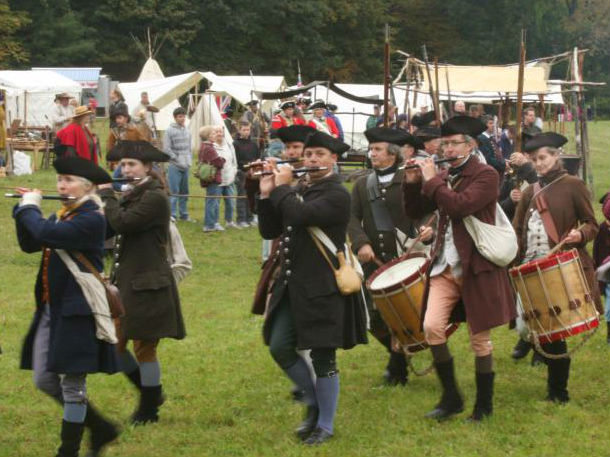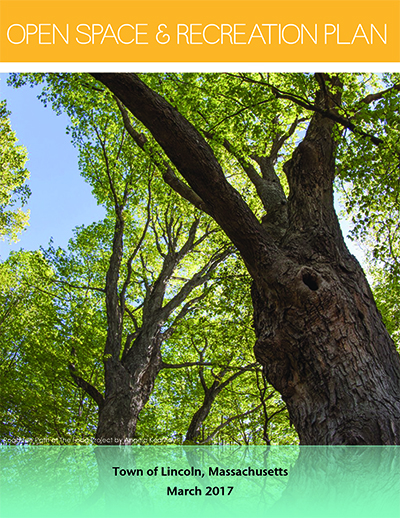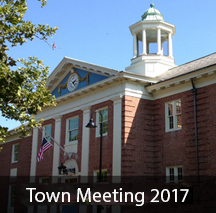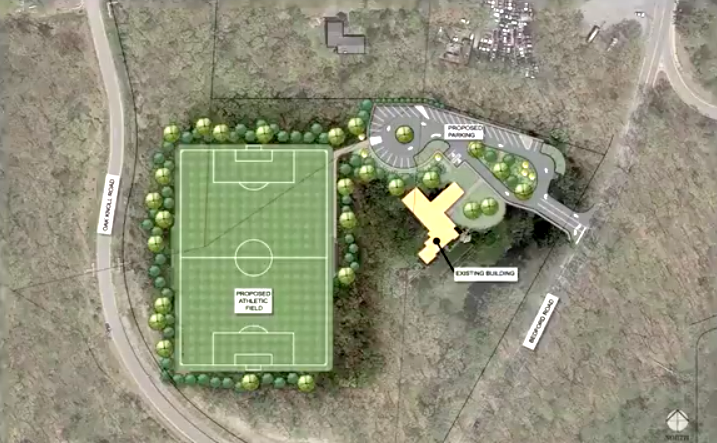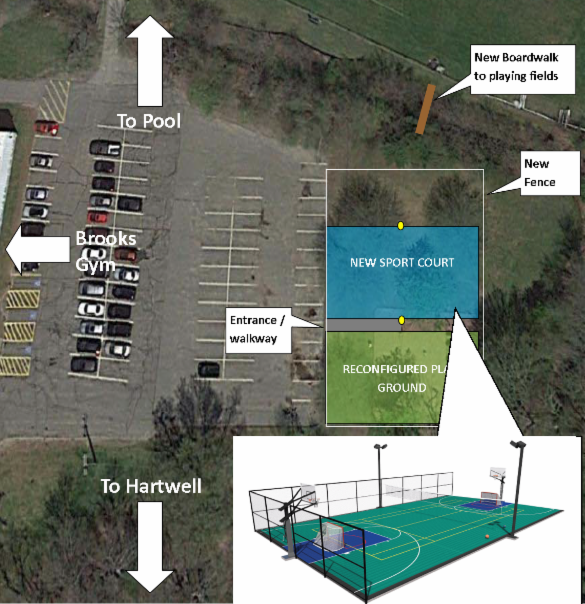
The new multi-sport court will be located just north of the “tot lot” playground behind the Brooks gym (click image to enlarge).
The multi-sport court that was formally proposed in 2015 will become a reality by June, according to Parks and Recreation Director Dan Pereira.
Residents approved spending $146,000 at Town Meeting in 2015 for an outdoor facility that could be used for basketball, tennis, street hockey, volleyball and other sports. The court will go next to the “tot lot” playground near Codman Pool, which is now closed while it’s being reconfigured in a slightly narrower space to accommodate the new court.
The court took longer than expected to put in place because the site is close to wetlands and required a permit from the Conservation Commission as well as input from a wetlands engineer, Pereira said. That process included studying the pros and cons of other possible locations in town.
The sport court will have lighting so it can be used at night, and it will be installed over a water-permeable grid rather than a concrete pad. This means that the court can be moved without too much trouble if it should have to be relocated as a result of a school and/or community center building project.
The project also includes a new boardwalk to more directly connect the sport court area to the playing fields next to Codman Pool.
The 45-by-80-foot court, which is expected to be ready to use some time next month, can be changed by Park and Rec officials for use by multiple sports, depending on school and community interest, “It’s something that’s not very hard to reconfigure at all,” Pereira said. For example, netting mounted on light poles can be raised or lowered depending on whether it’s being used for tennis or volleyball, and it could even be flooded in winter for ice hockey.
The town’s after-school tennis program will also get more playing time next spring, because the court will be ready for use as soon as the snow melts, unlike the clay courts that need more time and maintenance to recover from the snow and ice. The new facility will also be the only official-size outdoor basketball court in town, Pereira noted.


